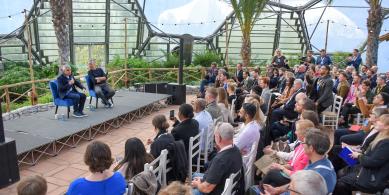Productivity within the ‘vaguely creative industries’ (which is how I think of marketing) is a subject soaked in unresearched hypothesises. Here are four more:
1. Win back productive time by banning talk of bike sheds
I was once in a meeting about a software project. It was like meetings I’d been in my whole life - aimless, drifting, pointless. Then suddenly one of the developers said “Hang on we’re bike-shedding”. “Ah yes” said another “we are”. The meeting immediately shifted gear. Decisions were quickly taken or dismissed and we all got back to work. I was a little shellshocked so I went back to my desk and googled “bike-shedding”. Reading that wikipedia entry was one of the things that convinced me that the practises of agile, user-centric software and web development will eventually displace those of most creative industries. “Bike-shedding” comes from a story by C. Northcote Parkinson (he of Parkinson’s Law). He tells the tale of a committee that has to approve the plans for a nuclear power station. Since they know very little about nuclear power stations they talk about it briefly and then just approve the recommendation put in front of them. Next they have to approve the plans for a bike shed. They all know about bike sheds. They’ve all seen one and used one. So they talk about the bike shed for hours, arguing about construction methods and paint choice and everything. This is why bike-shedding is also known as The Law of Triviality: “ members of an organisation give disproportionate weight to trivial issues”. I’m sure this observation is familiar to you. Most branding conversations seem, to me, to be one long bike-shedding session. It’s not so terrible, it’s human nature. The difference is that software people have identified and named the pattern. That naming is an organisational hack that allows them to break out of it and get on with something more useful. (See also: Fredkin’s Paradox)
2. Your people are your advantage, you’re wasting their time with bad software
I was once the Regional Planning Director (EMEA) for a global advertising agency. The number one complaint from all my planners was the enormous amount of time they had to spend filling in time-sheets. It always struck me as silly whining. I said as much at a planning lunch. “That’s because your PA does yours” came the swift rejoinder. It was a powerful reminder of how frequently I fail at basic empathy but also illustrates one of the most frustrating productivity drains in most of our businesses - shitty software. Almost every largish company does global deals with terrible tech giants to deliver systems like payroll. They then throw in things like expenses and time-sheets for free but those things are universally awful. No one notices, though, because the senior people don’t actually use those systems and no one attempts to measure the time lost.
3. Productivity does not flow from tidiness
High intensity creative production depends upon the unexpected collision of ideas - so you have to have ideas lying about and you have to have conditions in which they might collide. Most corporate environments - even those with colourful beanbags and foosball tables - militate against this. Office management, for good reason, tends to dislike mess. Many a security guard has told me that post-it notes are a trip hazard. Creativity, however, needs that mess. The best, simplest way to increase the creativity of your organisation is to encourage people to stick stuff on the walls. To get their ideas out of their computers and into the environment. To take down the framed artwork, the nicely designed corporate slogans and the pictures of the founder and to stick up random cuttings, articles, inspiration, pictures, scripts, ideas and drawings. And then to get the cleaners to back off.
4. You get what you measure but sometimes you kill it
If you’re looking for magic, the unexpected blockbuster, the disproportionately effective creative disruption then you need to think hard about how you’re going to measure it. Remember when every car started to look the same - a kind of jelly-mould Euro sameness? That was largely because every manufacturer was optimising their cars in a wind tunnel and letting that test dictate the design. Not stupid. But soon every car looked the same- so they had to style some arbitrary differences back in. That’s why creative legends BBH talk about the wind tunnel effect when it comes to making ads. Tuning and tuning, looking for more effective production, is a great idea. But you need to recognise when you’ve reached a local maximum, when you can’t test and learn any further. That’s when you need a leap in the dark or all your measuring will kill the very thing you’re after.
This piece was taken from The Marketing Society print title Market Leader.
Newsletter
Enjoy this? Get more.
Our monthly newsletter, The Edit, curates the very best of our latest content including articles, podcasts, video.
Become a member
Not a member yet?
Now it's time for you and your team to get involved. Get access to world-class events, exclusive publications, professional development, partner discounts and the chance to grow your network.




